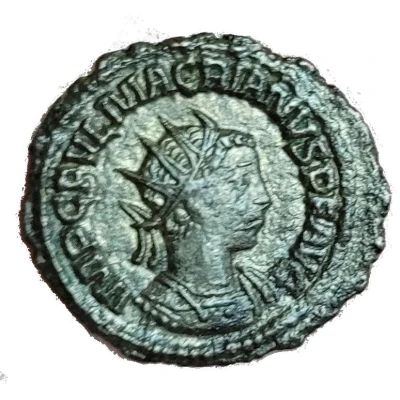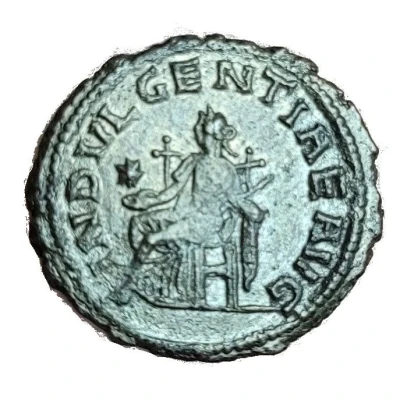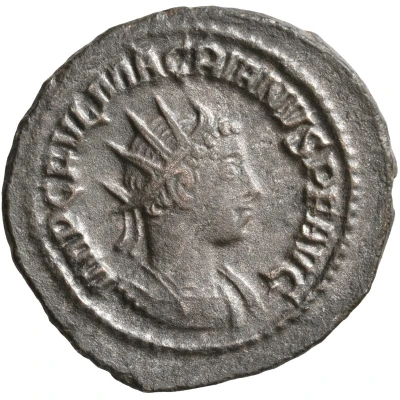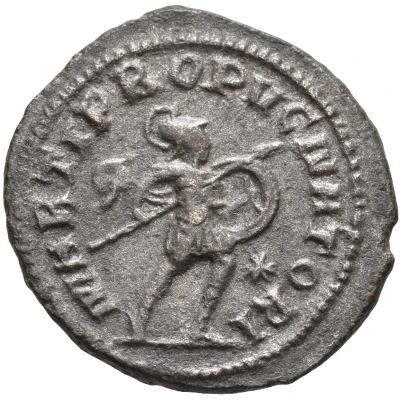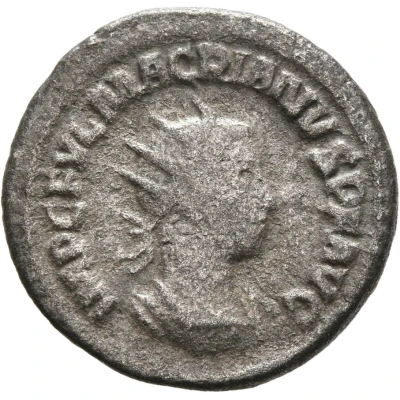
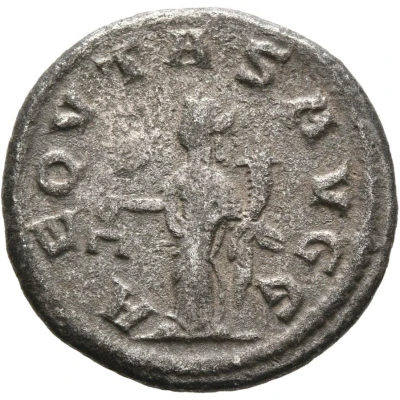

Antoninianus - Macrianus Minor AEQVITAS AVGG or AEQVTAS AVGG; Antioch
| Silver | 4 g | 22 mm |
| Issuer | Usurpations of Eastern provinces (Roman Imperial usurpations) |
|---|---|
| Ruling authority | Macrianus Minor (260-261) |
| Type | Standard circulation coin |
| Years | 260-261 |
| Composition | Silver |
| Weight | 4 g |
| Diameter | 22 mm |
| Shape | Round (irregular) |
| Technique | Hammered |
| Orientation | Variable alignment ↺ |
| Demonetized | Yes |
| Updated | 2024-10-10 |
| Numista | N#414002 |
|---|---|
| Rarity index | 100% |
Reverse
Aequitas, draped, standing left, holding scales in right hand and cornucopiae in left hand.
Script: Latin
Lettering: AEQVITAS AVGG or AEQVTAS AVGG
Comment
After the capture of Emperor Valerian by the Persians in 260, the two brothers Macrianus Iunior and Quietus rose up in the east of the empire under the leadership of their father. Macrianus Iunior and Senior sought a military decision against the reigning emperor Gallienus in 261. However, both lost their lives in the battle in what is now Bulgaria. Quietus would also be murdered shortly afterwards in Antioch, bringing this rebellion to an end. This antoninian was dedicated to the serenity of the emperor. It was intended to show that the emperor would remain calm and maintain the dignity of his office even in difficult situations. However, this also meant that he could use this quality to lead the empire back into calmer waters. The corresponding deity Aequitas was depicted on the reverse with her usual attributes, the scales and the cornucopia, as she was also supposed to have further positive consequences for the emperor's actions, symbolised by the serenity of the scales and indicated by the full cornucopia.
Interesting fact
One interesting fact about the Antoninianus coin featuring Macrianus Minor is that it was minted during a time of great turmoil in the Roman Empire. The coin was issued during the Usurpations of Eastern provinces, a period of political instability in which various regional governors and military leaders attempted to seize control of the empire. Despite this, the coin still bears the image of the Roman emperor, Macrianus Minor, indicating that he was recognized as the legitimate ruler of the empire, at least in some parts of the eastern provinces. This coin serves as a tangible reminder of the complex political dynamics at play during this time in history.
